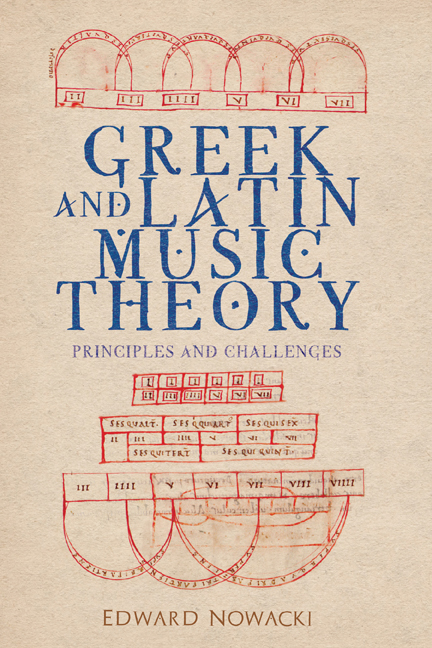Summary
Ancient Greek music, like modern Western music, is not simply an arrangement of pitches provided by nature. It is a construct that assigns meanings, or functions, to the pitches. One of the consequences of those assignments is homonymy, in which the same pitch bears different meanings, depending on the context. An example in modern Western music is the semitone above E, which may function as the fourth step in the key of C or the seventh step in the key of F♯. The two functions, though realized with the same physical pitch, differ radically in their meaning and contextual implications. The notational system recognizes that difference by notating the first as F and the second as E♯.
A similar principle of homonymy underlies the music of ancient Greece. There the same abstract pitch may embody a stationary note in one tonos and a movable note in another. The note f in the Dorian tonos (on B♭) functions as hypatē mesōn, the stationary note at the base of the mesōn tetrachord (b♭–a♭–g♭–f ), while the same pitch in the Hypolydian tonos (on A) functions as parhypatē mesōn, the first movable note above the stationary base (a–g–f–e). The pitch f is thus a kind of homonym, realizing two radically different functions with the same sound. The remarkable thing about the Greek notational system is that it recognized that difference by providing each function with a different symbol. When functioning as the stationary hypatē mesōn, f is notated with an uninflected note, similar to a modern natural. When functioning as the movable parhypatē mesōn, the f is notated with an inflected form of its lower neighbor, raising that note by a semitone (in the diatonic and chromatic genera), comparable to the modern e♯.
This principle of homonymy is a reminder of certain generalities that are common to the ancient Greek and modern notational systems. Those generalities will be the subtext of this chapter. While it is intended primarily as an introduction to Alypian notation, the chapter may also be read as a reflection upon the ways in which the ancient and modern notational systems exemplify certain principles important to all students of the history of music theory.
- Type
- Chapter
- Information
- Greek and Latin Music TheoryPrinciples and Challenges, pp. 42 - 50Publisher: Boydell & BrewerPrint publication year: 2020

